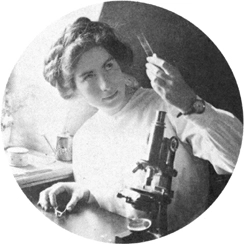All over the Universe we expect that the speed of light plays the same basic role. It is a cosmic speed limit: no information can be transferred faster than the speed of light in vacuum.3
Einstein had many interesting things to say about the constants of Nature at different stages of his life. It was his elucidation of the theory of relativity that endowed the velocity of light in vacuum with its special status as the maximum speed at which information could be transmitted in the Universe. He revealed the full extent of what Planck and Stoney had merely assumed: that the velocity of light was one of the fundamental superhuman constants of Nature. In the second half of his life, he became increasingly absorbed with a search for the ultimate theory of physics. He called it a ‘unified field’ theory whereas today it would be called a ‘Theory of Everything’.4 Alas, physicists now believe that Einstein achieved very little in that period of intense investigation, as he constantly tried to find a bigger and better theory than his general theory of relativity: one that would include other forces of Nature than gravity.5 He believed that such a theory existed and its uniqueness and completeness would leave no mathematical loose ends. Consequently, it would have the smallest possible number of constants of Nature6 which could then only be found by experiment.
Einstein was not really happy for there to be any free constants like this at all. He realised that the search for the ultimate theory was a process of finding better and better theories which superseded the previous one. At present our theories are provisional and so there are a number of free constants of Nature appearing in them which we just have to measure. Ultimately, this situation would change. He expected that his unified theory would determine the values of constants like e, G and c in terms of pure numbers that could be calculated as accurately as one wished.
Einstein wrote almost nothing about these ideas in his published articles and other scientific writings. Yet he maintained a lifelong correspondence with an old student friend, Ilse Rosenthal-Schneider (pictured in Figure 3.1), who was interested in the philosophy of science and was a close friend of both Planck and Einstein in her youth. She and her husband emigrated to Sydney to escape from Nazi Germany in 1938. For a period, between 1945 and 1949, the personal letters between Einstein and Rosenthal-Schneider focused on the question of constants of Nature. Einstein thinks carefully about his explanations and provides a clear and full statement of his beliefs and hopes for the future of physics.
Rosenthal-Schneider first wrote7 to Einstein about constants in 1945. What are they? What are they telling us about the lawfulness of Nature? Are they all related? She was surprised to get a very fast response which actually began to answer her questions. She had learned that questions about his health, general situation or other personal matters generally went unanswered or were ignored in his replies. But this was a subject he wanted to think about. His reply was posted from Princeton on 11 May 1945:
‘With the question of the universal constants, you have broached one of the most interesting questions that may be asked at all. There are two kinds of constants: apparent and real ones. The apparent ones are simply the outcome of the introduction of arbitrary units, but are eliminable. The real [true] ones are genuine numbers which God had to choose arbitrarily, as it were, when He deigned to create this world.

Figure 3.1 Ilse Rosenthal-Schneider (1891–1990).8
My opinion now is – stated briefly – that constants of the second type do not exist and that their apparent existence is caused by the fact that we have not penetrated deeply enough. I therefore believe that such numbers can only be of a basic type, as for instance π or e.’
What Einstein is saying is that there are some apparent constants which are created by our habit of measuring things in particular units. The radiation constant of Boltzmann's is like this. It is just a conversion factor between energy and temperature units, rather like the conversion factors between Fahrenheit and centigrade scales of temperature. The true constants have to be pure numbers, not quantities that have ‘dimensions’, like a speed or a mass or a length. Quantities with dimensions always change their numerical values if we change the units in which they are expressed. Even the speed of light in vacuum can't be one of the true constants Einstein is searching for. A speed has units of length per unit time and so could not be shown to be some combination of the ‘basic’ numbers, like π, that Einstein seeks. It could equally be 186,000 miles per second or 300,000 kilometres per second.
1 comment